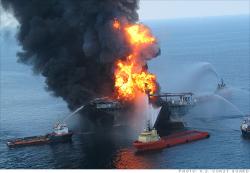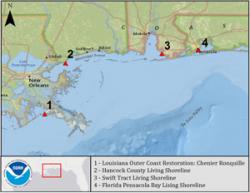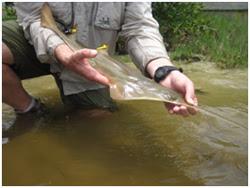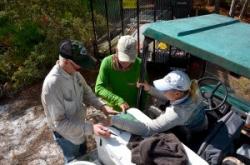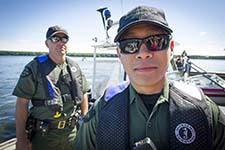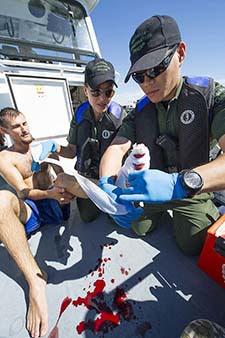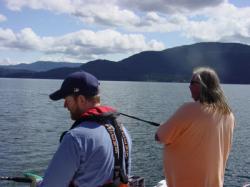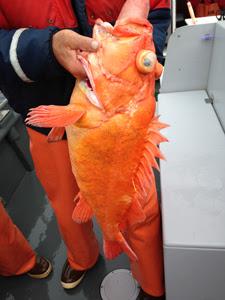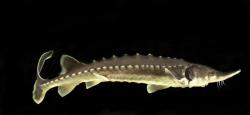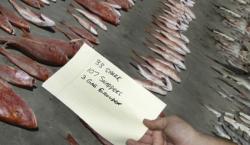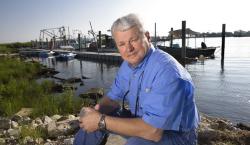The BP Windfall–Funds for Gulf Restoration
By Frank Sargeant, Editor
from
The Fishing Wire
In one of the more bizarre turns of events in environmental history, the calamitous BP oil disaster in the Gulf of Mexico may turn out to have been historically a good thing for many portions of the shores of this American sea.
While the enormous outpouring of oil, variously estimated at up to 4.7 million barrels (about 200 million gallons over 87 days), was the greatest manmade environmental disaster in history, killing fish, marine mammals, bottom fauna and sea birds in untold numbers as well as fouling hundreds of miles of shoreline and virtually wiping out an entire tourist season in many communities surrounding the Gulf, it now appears that the enormous fines and lawsuit penalties levied against British Petroleum and associates may wind up giving a historic infusion of cash for environmental projects that stood no chance of being funded or even planned without the giant cash cow suddenly available.Those of us who have spent time around the Gulf oil rigs fishing know that they are not the demonic towers of environmental destruction that some folks seem to think they are: In fact, there are more fish per square foot around these towers than anywhere else in the Gulf, with both reef species like snapper and grouper and pelagics like kingfish and yellowfin tuna swarming around many. On the other hand, the BP disaster shows the potential for great harm that’s inherent in pulling industrial quantities of petroleum out of the sea floor anywhere in the world, and hopefully has taught the entire civilized world a lesson in the need for careful control of this harvest. And the huge fines resulting have hopefully taught a lesson to the companies extracting the oil, as well.
On July 6, 2012, President Obama signed the RESTORE Act into law, establishing a trust fund within the Treasury Department, with 80 percent of the civil penalties to be paid by parties responsible for the Deepwater Horizon oil spill under the Federal Water Pollution Control Act. To date, civil penalties and interest deposited into the trust fund exceed $653 million.
That could be a drop in the bucket. The Justice Department has found “gross negligence” against BP, which means penalties under the Clean Water Act will swell to $4,300 per barrel, making the determination of how many barrels were released critical in settling what the ultimate civil fine will total. The fine reportedly could have been as low as $1,100 a barrel had BP not cut so many corners in regards to the safety of its workers and the health of the Gulf. If BP’s estimate for barrels spilled is accurate, the fine will be about $10 billion for its gross negligence. That total could be in excess of $18 billion if the Justice Department is right. Either way, it’s an enormous amount of money.
A total of 35 percent of the Gulf Coast Restoration Trust Fund is divided equally among the five states for ecological and economic restoration. The states of Alabama, Louisiana, Mississippi, and Texas each receive a share for projects and programs they select. In Florida, the state’s allocation goes to 23 coastal counties for projects they choose. A second Interim Final Rule finalizes an additional allocation for 20 parishes in Louisiana.
Treasury will also provide grants for centers of excellence research programs using 2.5 percent of the trust fund, divided equally among the five Gulf Coast States.
On Sept. 15, Treasury posted the funding opportunity announcement for these grants as well. The centers of excellence will focus on science, technology, and monitoring. In addition to these grant programs, the Interim Final Rule published in August describes requirements for RESTORE Act programs administered by other federal agencies. Treasury is just one of several federal entities working to implement the RESTORE Act.
The Gulf Coast Ecosystem Restoration Council, a federal council composed of the five Gulf Coast States and six federal agencies, will use 30 percent of the trust fund for projects selected by the council, and administer grants to the states pursuant to council-approved state expenditure plans using an additional 30 percent.
The National Oceanic and Atmospheric Administration will use the remaining 2.5 percent of the trust fund for a program focused on advancements in monitoring, observation, and technology. For more information on the Gulf Coast Ecosystem Restoration Council, visit http://www.restorethegulf.gov/.
In short, it’s by far the greatest infusion of money into an environmental restoration project in U.S. or world history, an unimaginable windfall that if spent wisely should bring tremendous benefits to the Gulf estuarine and beach areas for decades to come–and some very nice added benefits to the anglers who chase the millions of fish that will be produced in these restored areas.
To be sure, the Gulf is likely to face issues in coming decades if sea level rise continues as many scientists predict–while wetlands, mangroves and marshes like wet feet, too much water can kill out these nursery areas, which are absolutely essential to preserving the chain of life that ultimately results in everything from gamefish to porpoises and whales.
The public has an opportunity for input on projects that need funding from this money. This Wednesday, Oct. 22, a public webinar will run from 6 to 8 p.m. EST.
Advance registration is required. Go here: https://www2.gotomeeting.com/register/338981370
To be sure, the road to full recovery of the Gulf from the BP incident is still somewhere in the future, but the restoration projects already underway and those planned for the future may well bring the resource to a level that is even better than before the disaster, for the fish and marine life, for anglers and boaters, and for the general public which enjoys this uniquely American resource.
